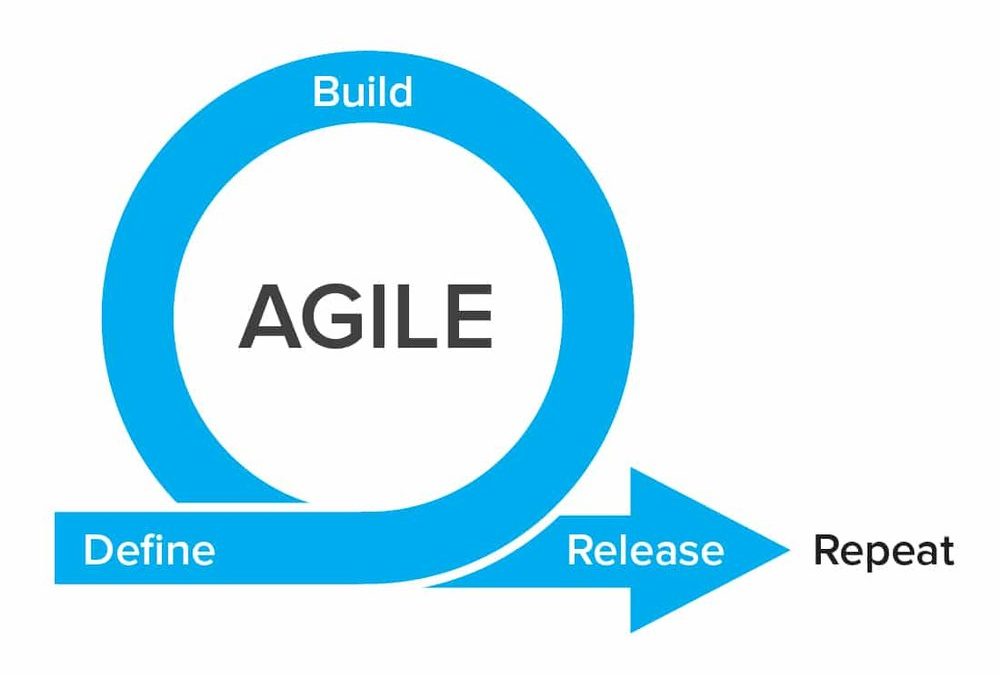Best Agile Practices for Remote Team Management in 2022
2020 went down in history as the year of unfortunate events!
And the major problem that struck the world in the name of this deadly virus, Covid-19.
The situation resulted in millions of casualties and forced people to stay indoors. Loss of life, breaking economy, and whatnot? Amidst all of this, thousands of companies are still operating remotely.
Agile development, a popular practice for companies, faced a backward push. Many organizations assumed it to be a methodology that can only be implemented when the teams are present physically in the office premises.
The global pandemic is unlikely to fade sooner, and hence many giants like Google and Amazon had decided to operate remotely until the year 2021. Brands like Facebook and TCS have gone a step further and are planning to implement this “work from home” culture in the longer run.
Many organizations believe it to be a new normal when the crisis subsides, and if that is the case, The world needs to capture the best practices and learning for adjusting with this new reality.
Agile is a significant element of it.
Today, in this article, we will focus on the best practices remote teams need to adopt for agile development and how to implement them the right way.
But, first thing first.
What is Agile Methodology?
It is a process by which a team can manage the workflow by breaking into different stages. The methodology requires continuous collaboration with the stakeholders for improvisations.
“…the agile movement in software is part of a larger movement towards more humane and dynamic workplaces in the 21st century.”
Rowan Bunning, Australian Agile Coach
The practice involves multiple retrospection cycles to go back and forth the development with the client, illustrating the requirements and the end problem the product would be solving. Continuous collaboration, improvisation, evaluation are the key components of this approach.
Read More about Agile Project Management here!
What are the challenges of remote working?
Remote team management poses different challenges, few of which can be overcome by technology. Agile methodology is one such solution.
For a successful remote team, companies need to hire people who are great communicators. But the pathway is not that easy, and managers need to overcome various challenges:
- Team Vibe
It is a bit difficult to foster the community feeling while being in distant places. The consequences of which are misunderstandings and cultural differences that can hamper productivity.
- Time Difference
This one has both positive and negative attributes. While the work can continue without breaks, urgent meetings and immediate calls can’t be made with the difference. Due to short-period crossovers, it also gets difficult to press important topics timely and gather feedback over the same.
- Body Language
Communicating via online workspaces and messaging apps leaves space for misunderstanding as it’s hard to interpret what goes into a person’s mind without seeing their body expressions.
Managers usually encounter all the above challenges during remote team management, which also happen to impact productivity. But the positive side of the aspect is it isn’t impossible to solve them. Agile Best practices are known to address these issues effectively.
Wondering How Agile Can Help?
Benefits of Agile Development
- Agile facilitates remote teams to implement a framework that promotes team collaboration, iterative development, and qualitative work.
- It replaces complicated, lengthy, and expensive development cycles. Rather than working for months on product development, a team can work parallelly on various development stages.
- Agile is considered a quicker and more efficient approach to development. This is because multiple phases of development work simultaneously instead of focusing on a singular task at a time, such as pushing updates in real-time.
Agile Practices are usually for the team concentrated in one location; decentralized teams can also operate with the same level of effectiveness-
- In a remote environment, there is a larger exposure. Companies can hire talent from distant areas at competitive prices. Often, this also reduces the overhead because hiring can be done with lower investment.
- Since all the processes have to be shared across various locations, they are appropriately documented in digitized format, increasing the transparency of tasks.
- Overall, the remote teams have flexible work schedules since they are scattered across multiple locations. The members even have the freedom to take breaks whenever they want to and break through the traditional 9-5 routine.
8 Best Agile Best Practices for Remote Teams
Here is the list of best agile practices that can be easily integrated into everyday tasks to improve productivity-
1. Schedule Your Day With Standups
Be it remote or in-house teams, scheduling daily stand-ups with either is an important thing. With the rise of technology, everything has just become 10X times easier. Tools like Google Hangouts and Zoom Meetings are an easier way to hold such meetings.
The digital tools will provide a common platform for communication and facilitate multiple things such as screen sharing, session recording, etc.
While conducting daily standups, each participant must be asked the following questions to avoid overstretching the call and having a brief about everyone’s schedule-
- Were you able to accomplish yesterday’s goals?
- What is your plan for today?
- Are you facing any hurdles?
- Do you need support from colleagues or managers?
- Etc, etc.
In case you’re bound by a time-limit, and some topic requires in-depth discussion, then that must be moved to a separate meeting.
2. Are you creating Story Maps?
A software development project requires story maps outlining all the application’s steps and requirements from the user’s perspective. The map is created for a common understanding of the project to be developed. All the steps to be accomplished are broken down into subtasks.
These maps give an overall outlook of the to-do list for the project and hence simplify the planning. Remote teams can create story maps using real-time boards for jotting individual tasks and free them from sticky notes practice.
With a fully-fledged project management tool, it is effortless to translate your planning board to its online replica.
3. Rise the ladder with Sprint Planning
Sprint planning is used for determining which content needs to be processed in the upcoming cycle. A separate period must be allotted for planning and eliminate repetitive administrative tasks in the long run.
It is used for dividing the project into tasks and subtasks for keeping all the members up-to-date via the springboard. This way, the work can be done into small packages and distribute to the members.
4. Visualize Workflow with Kanban Principles
Whether you’re using old-age whiteboards or digital tools like Orgzit for visualizing the project’s progress, availing Kanban Principles is the right approach. A sprint board presents the complete workflow depicting every stage of the project.
Kanban principles break the tasks into a story format and are majorly categorized into four stages- Backlog, Ready, Work in Progress, Done.
This way, the complete team has an eye on the workflow and is aware of which tasks are undone.
5. Key to Success- Functionality Demonstration
Once you’re done crafting the story, schedule a meet with your product owner and the rest of the team to demonstrate the functionalities. Designate a person who has been involved in developing features and functionalities for walking through the story.
Also, the person giving the demonstration must follow specific protocols, like
- He should only share the screen that is essential for the meet,
- No messages popping on the screen from other chat apps; it is quite distracting!
- Also, consider recording the meeting for future reference.
- During video conferences, you can encourage the “Raise a Hand” kind buttons that Zoom offers for people to present their views instead of interrupting now and then.
For web development teams, you can consider Google Chrome split personalities, which helps create separate browser instances. It will increase the developers’ productivity and leave a professional reputation.
6. Define the Acceptance Criteria
Acceptance criteria are a crucial step to be implemented in agile development methodology. Define the acceptance criteria in a story walking meet or schedule a separate meeting for the same.
Whatever be the approach, it is relevant for the product owner to be present in the meeting. After setting up the criteria, add tickets to the planning board.
To reduce accidental misses, the best approach would be to list the requirements in the popup and confirm them with the developer before transferring the ticket to testing.
7. Craft a Release Schedule
Create a realistic release schedule and stick to it; though it’s a bit challenging, it is essential to outline deadlines and prioritize the tasks accordingly.
On the heavy days, you can opt for the Pareto Principle approach, i.e., 20% of your backlogs make the foundation for 80% of the functionalities. Using this, you can filter the essentials and non-essentials easily.
Also, it is important to set-up a branching strategy and learns to operate with pull requests. Have a separate person for reviewing codes or split the responsibility amongst the whole team. The matter of the crux is to set coding standards and adhere to them.
8. Retrospect with Retro Meetings
Agile best practices are used for empowering, supporting, and collaborating with your remote team. But for a successful process completion, you have to continually look at what’s working and what’s not working.
Fine-tune your work by continuous evaluation and evaluate the issues; this is where a retro (retrospective) meeting comes in!!
A retro meeting is held at the end of every sprint. It gives an opportunity to the whole team to look at the errors and loopholes. A successful retrospective meeting is accomplished when the entire team comes to the table and collaborates for the next sprint by looking at the past flows and accomplishments.
There is nothing to lose after a retro; it only improves productivity.
Empower your team with Right Technology
Tools and technology have become an intricate part of our systems. For a successful collaboration in these changing times, it is essential to empower your remote team with the software they would be requiring.
Agile practices are successfully implemented with group chatting, video conferencing, and a feature-rich task management system. So don’t forget to invest in them!
Whether you’re working remotely or on the office premises, a successful team is always equipped with the right tools. And during these covid timings, where remote culture has become a new normal, the importance of these tools has only increased!
And additional tools required would be dependent on your team and project.
Check out the 15 Best Tools for Project Managers to manage work remotely!
Here you are, skimming through the last few lines of “8 best agile practices” for remote teams. We have covered every nook and corner related to this term, but going by the words of Jim Highsmith, “ Agile is principally about mindset and not practices.”
It needs to be adopted not just by a team, but by individuals!
Liked what you read? Don’t forget to share it with your friends and colleagues!
Happy Development!









